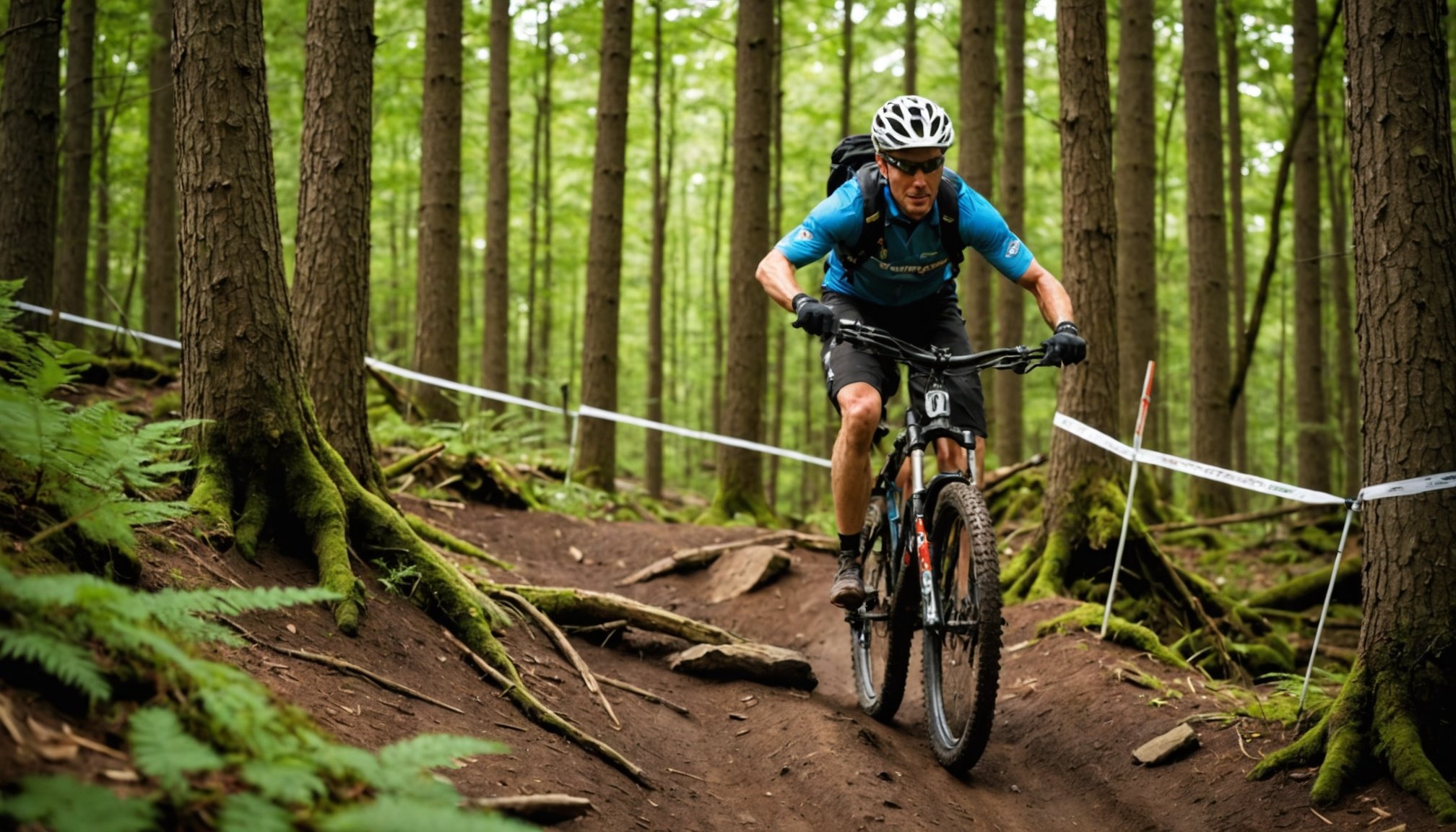Proven Endurance Training Strategies
When it comes to endurance training for mountain biking, aerobic conditioning is crucial. This training type helps build the cardiorespiratory foundation necessary for sustained performance on long rides. By engaging in regular aerobic exercises, such as cycling at a steady pace, you enhance your body’s ability to utilize oxygen efficiently.
Strength training also plays a vital role in stamina building. Specific exercises, such as squats and lunges, target the muscles used during biking, offering better muscle endurance and power. These exercises not only improve your strength but also help in maintaining optimal performance for longer periods.
Also read : Master Your Swim Stroke: Top Technical Drills for Optimal Efficiency
Incorporating progressive overload techniques is essential for performance enhancement. By gradually increasing the intensity, duration, or frequency of your workouts, your endurance capabilities will improve over time. This method stimulates adaptations in the body, promoting enhanced stamina without risking injury due to overtraining.
- Aerobic Conditioning: Builds respiratory efficiency.
- Strength Training: Focus on leg muscles for biking endurance.
- Progressive Overload: Gradual increase in workout intensity.
By implementing these strategies, you can significantly boost your mountain biking endurance, allowing you to tackle more challenging terrains with confidence and ease.
In parallel : Elevating Athlete Performance: Leveraging Wearable Tech to Prevent Overtraining in Elite Professionals
Techniques for Conquering Challenging Trails
Mastering trail navigation and technical skills is essential for every mountain biker aiming to tackle difficult terrain. Key skills such as reading the trail, anticipating turns, and choosing the best line can make a significant difference in your riding experience. Proficiency in these areas allows for smoother rides and less risk of obstacles disrupting your flow.
When it comes to bike handling on steep descents and ascents, maintaining control is critical. To manage descents, ensure you maintain a balanced position over your bike, keeping your weight low and centered. On challenging ascents, focus on consistent pedal strokes and distribute your weight to maintain traction. This technique aids in conquering steep climbs without losing speed or control.
Aside from physical skills, mental strategies play a vital role in overcoming fear and boosting confidence. Visualizing success on a trail or setting small achievable goals can help you build confidence gradually. Mental preparation not only enhances performance but also transforms daunting trails into exciting challenges. Remember, every rider possesses unique strengths; harnessing them through practice and positive mindset is key.
Essential Gear for Elevated Performance
Selecting the right mountain biking gear is pivotal for enhancing your biking experience and achieving optimal performance enhancement. The equipment you choose can greatly influence your ride’s efficiency, safety, and overall enjoyment.
Bikes
A lightweight, durable bike is essential for peak performance. Advanced materials such as carbon fibre reduce the bike’s weight while maintaining robustness, ensuring you can tackle challenging terrains without added strain. Suspension systems are crucial for comfort and control, allowing for smoother rides over rough terrain. When choosing a bike, ensure it meets your specific riding style, whether cross-country or downhill.
Accessories
Essential accessories further enhance safety and efficiency. A reliable helmet provides critical protection, and quality gloves offer grip and comfort. Hydration packs keep you refreshed, crucial for maintaining stamina. For enhanced visibility and safety, lights and reflective gear are indispensable, especially for rides extending into low-light conditions.
Apparel
Appropriate clothing is key for comfort and speed. Look for moisture-wicking fabrics that keep you dry and regulate temperature. Padded shorts provide cushioning for long rides, while breathable jerseys improve airflow. Ensuring proper fit and functionality of your gear enhances performance and minimizes distractions, letting you focus entirely on the ride.
Sample Training Regimens
Effective training plans serve as vital tools for mountain biking enthusiasts aiming to enhance their endurance and overall performance. A well-structured regimen not only includes structured workouts but also strategic rest and recovery periods to optimize gains and minimize fatigue.
Weekly Training Schedule
An ideal mountain biking weekly training schedule combines diverse activities to target different aspects of stamina and endurance. Typically, cyclists engage in two to three days of aerobic biking, focusing on sustained rides at a moderate pace. This aerobic base is crucial for endurance, allowing riders to maintain a rhythm over long distances. High-intensity intervals, integrated weekly, further enhance performance improvement by boosting cardiovascular capacity and power.
Cross-Training Activities
Incorporating cross-training activities is essential for balanced development. Engaging in activities such as swimming or running introduces variety, reduces the risk of injury from repetitive motion, and builds overall muscular endurance. These activities also enhance anaerobic pathways, crucial for intense biking spurts.
Rest and Recovery
Just as important as the workouts themselves, structured rest and recovery days facilitate long-term endurance improvements. Active recovery, including light stretching or yoga, promotes muscle healing and reduces injury risk. Proper rest intervals within training plans ensure sustained performance without burnout, ultimately enhancing overall stamina and biking enjoyment.
Personal Stories and Expert Insights
Exploring mountain biking experiences offers valuable insights into the world of endurance training and technical mastery. Professional mountain bikers often share their transformational journeys; these anecdotes illuminate the dedication and strategy needed to conquer daunting trails. For instance, riders recount how experiences of navigating the Rocky Mountains reshaped their stamina goals and determination. Such vivid recounting not only inspires but also sheds light on practical approaches like maintaining consistent training and the mental grit required for stamina building.
Moreover, expert advice from seasoned coaches and trainers is instrumental in enhancing one’s biking prowess. Coaches advise on tailored endurance training plans, emphasizing a balance between aerobic conditioning and targeted strength exercises to achieve performance enhancement. They underline the significance of recognizing individual limitations and progressively challenging them through structured regimens. Insights also focus on mental fortitude, highlighting techniques such as visualization and positive thinking to minimize fear while biking challenging terrains.
Inspirational stories of biking enthusiasts surpassing personal obstacles are no less instructive. Whether overcoming injury or conquering anxiety on steep descents, these narratives testify to the liberating power of mountain biking. They encourage both novices and experienced riders to persist through challenges, elevating their mountain biking journey.




